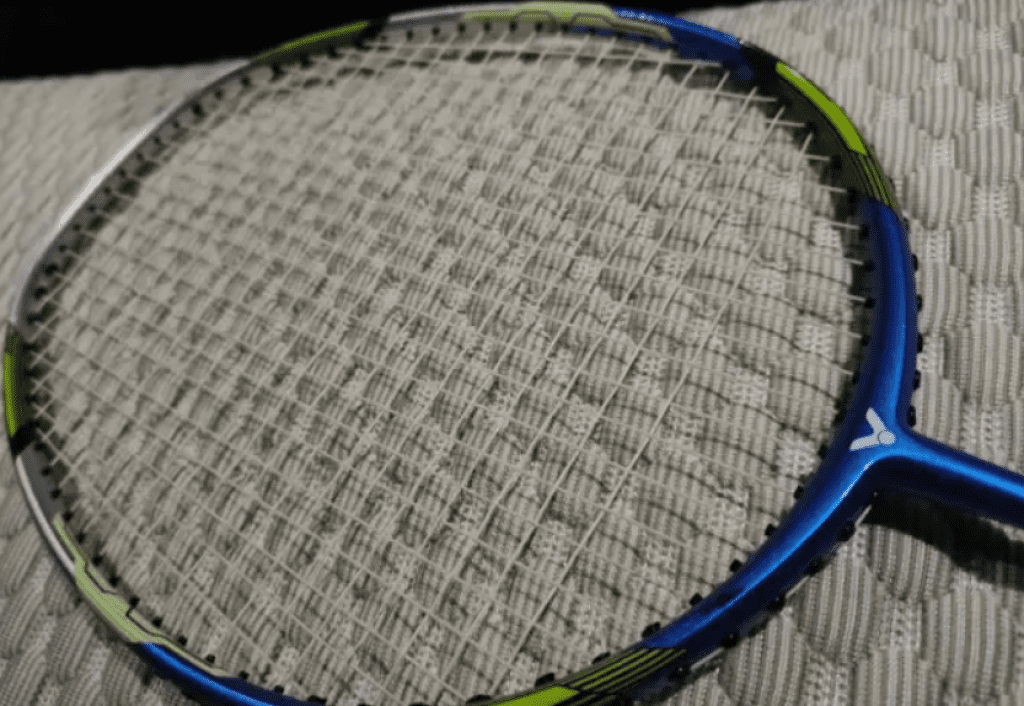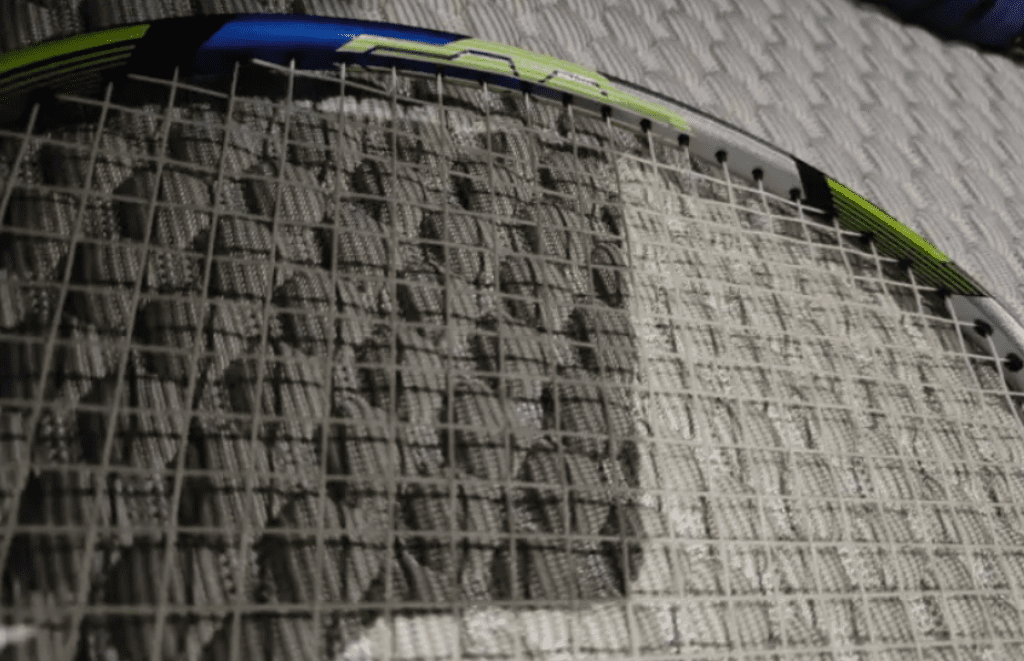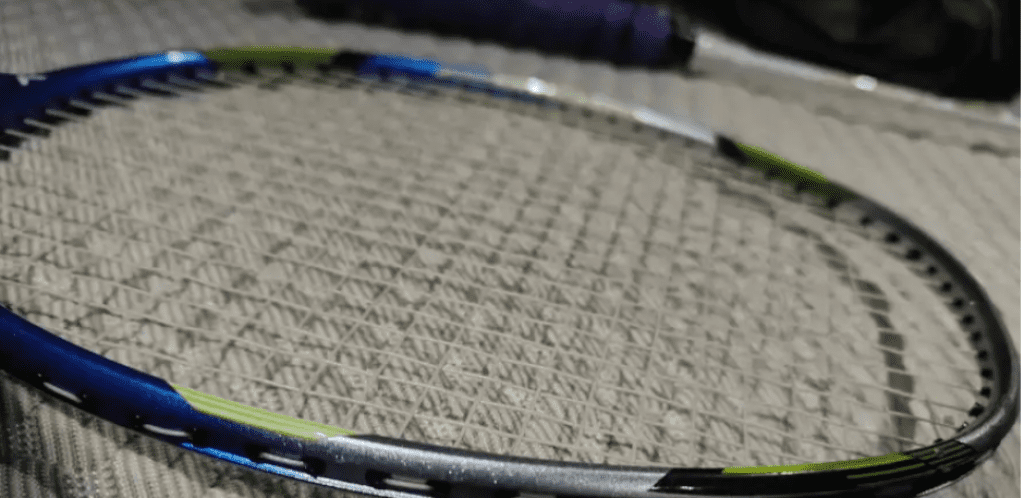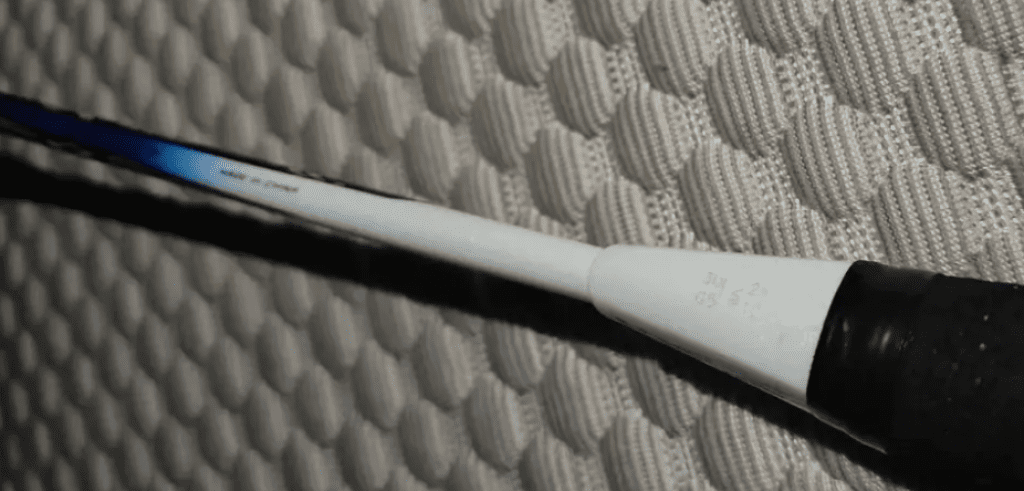I suddenly realized that there’s not much to say about old, low-end rackets. Even if I talk about them, they’re no longer available for purchase, so I might as well lay it all out during the All England period.
Let’s strike while the iron is hot and try out the low-end METEOR series. This might be the highest-numbered one, the 7600. Just by looking at the first two digits, 76 seems to be closer to 80, but the fact that they didn’t name this racket the 8000 makes it a bit puzzling. Given its age, it’s hard to find more information about this racket through other channels, so let’s just treat it as an ordinary entry-level racket.

Specifications:
3UG5, with a grip, total weight in use is 93.13g, balance point at 288mm, shaft length 215mm, low stiffness, octagonal aerodynamic frame, 72-hole string bed, 9-3 o’clock string grooves, warranty up to 24 lbs, strung at 23-24 lbs with NS660Ti.
The racket has its own style in terms of design, not following the pattern of some higher-end models. Giving a relatively high-end model in the low-end range a unique paint job isn’t something you see often. The symmetrical design from the racket head to the cone features a rich color gradient, transitioning from silver-gray, fluorescent green, white, navy blue, and back to white, all with a matte metallic-like finish. The aesthetic is quite strong. This racket is on the threshold of the mid-range level, with the nano tec below the T-joint as proof. However, the 7.2mm shaft remains unchanged.
Surprisingly, the racket feels light and nimble, with a very low balance point. For beginners, they probably wouldn’t notice if the 3U label on the cone was changed to 4U; it could easily be used as a speed racket. I’ve already covered the characteristics of the 72-hole string bed in the past, so I won’t repeat them here. The racket is very user-friendly, with low swing weight and high swing speed, and the shaft is quite soft. It’s easy to generate a sense of power without much effort; even gently swinging the racket with a grip slightly lower down can produce noticeable shaft flex. The racket is also quite powerful, making it easy to reach a high contact point and hit the sweet spot.
However, the shaft is just too soft, which significantly affects its attacking power and continuity.

In practice, the 7600 quickly proves itself with a friendly demeanor, showing its potential right away without any adjustment period. In doubles play, it quickly reveals its strengths, like flooring the accelerator in an entry-level electric car on the highway. The racket’s swing speed and maneuverability are quickly apparent, offering more room to perform in doubles.
The quick preparation, ability to drive the shuttle down from a high position, and smooth follow-through after each shot all show the racket’s potential. But due to the string condition and shaft stiffness, its response speed isn’t fast enough, especially in fast exchanges, although this can be improved by restringing.

In the mid-court, the 7600 seems to allow for more flexibility, not just limited to net blocks. Even in less ideal situations, like when the shuttle is lower or hard to attack, it performs well with net shots, lifts, and returns. The solid feel of the racket might be average, and perhaps the string’s strong hold on the shuttle is contributing to the good feel during delicate shots and backcourt drops, but the 7600’s flexibility certainly makes it easier to execute some tricky moves.
Furthermore, in defensive situations or when returning smashes, if the strings were more responsive, the performance could be even better. I believe its softness and lightness make it easier to handle such shots.

Actually, using the 7600 can make it easier to create opportunities for your partner to attack from the backcourt. However, when you rotate to the backcourt and take on the attacking responsibility, the 7600 feels too gentle. Although it has a good feel and it’s easy to reach a high contact point, whether using a quick, sharp hit or a powerful shot with body rotation, there’s a noticeable loss of power in the process. Excluding the string issue, the 7.2mm shaft seems to be overloaded and should be more rigid. The result is that even if you can execute an ideal downward shot, it’s unlikely to be a high-speed, powerful smash that poses a threat. Those who enjoy hitting the shuttle into the ground should avoid this racket. If it only offers continuity without the ability to threaten, many tactics will be difficult to implement—sometimes it’s better to just play a flat lift.

However, from the perspective of a “sugar-coated” racket, there’s nothing wrong with it. By the way, does anyone have a good method for removing old, sticky grip residue?

Leave a Reply